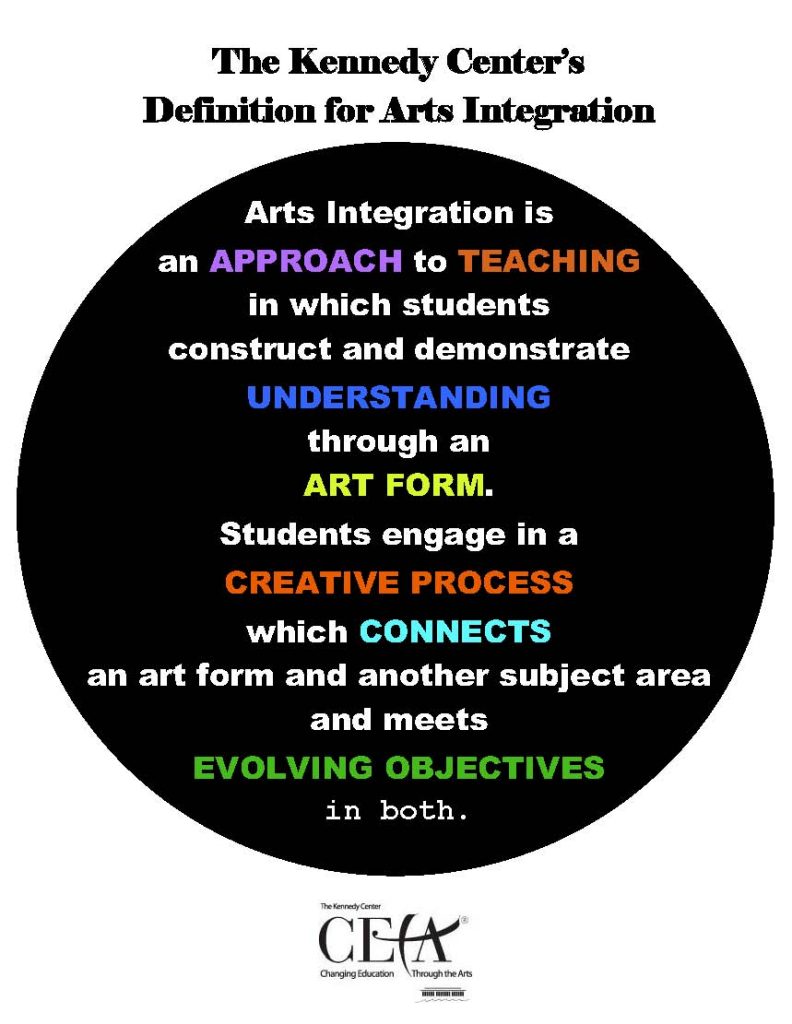What is the difference between arts education and arts integration? Arts education focuses on the fundamental, practical skills of art creation. Arts integration is an approach to teaching that allows educators to use creative strategies to teach their curriculum, giving students the opportunity to access multimodal learning. In order to embed this approach in the classroom, there must be a strong understanding of arts integration.
The Kennedy Center, the nation’s leading arts integration researcher, defines arts integration as an approach to teaching in which students construct and demonstrate understanding through and art form. Students engage in a creative process which connects an art form and another subject area and meets evolving objectives in both.

The definition begins with the phrase APPROACH to TEACHING, which is an essential foundation to an arts integrated classroom. An approach looks at the how of teaching with higher priority than the what. An approach to teaching functions off the idea that knowledge must be constructed.
UNDERSTANDING is the next key element in the definition of arts integration. When students produce products teachers are able to check for formative and summative understanding.
A very versatile and fun part of arts integration is the ART FORM. This is where you are able to choose the type of art medium you are going to focus on for the connected unit. This includes visual arts, dance, drama, and music.
In order for students to have space to construct their own meaning of a subject it is important that they engage in the CREATIVE PROCESS. In the process students get a chance to construct their ideas, test, share, evaluate, and edit their work. These steps are key in the creative process in that it emphasises that no work is completely finished and it can be edited.
When teachers are planning out their arts integrative units, they have to think about how the art form CONNECTS to the curriculum or concern area. A truly integrated unit has root connections to either the core content that teachers are already reviewing or a concern or struggle area for students.
EVOLVING OBJECTIVES requires the teacher to create objective in both the art form and content. Picture evolving objectives as a spiral, as the objective of the art form develops, so do the objective of the core content; however they operate independently while working toward a unified goal. As students develop confidence toward an objective they are motivated to keep going and move forward with the entire project.
Armed with this strengthened understanding of arts integration, teachers are able to be more thoughtful with how they approach an arts integrated unit. A common definition allows teachers to work to embed the arts in their daily routines.
The Right Brain Initiative’s mission is to spread awareness of and tools for arts integration in classrooms around the region. In 2010, Portland was chosen by The Kennedy Center as the third partner community for Any Given Child, an initiative facilitating long-range, holistic arts education planning for K-8 students, including arts integration. Through RACC, Right Brain has assumed a leadership role in collaborating with the community in this effort. In 2019, we are equipping teachers with arts integration strategies to reach 32,000 students across eight school districts in the Portland metro region.

